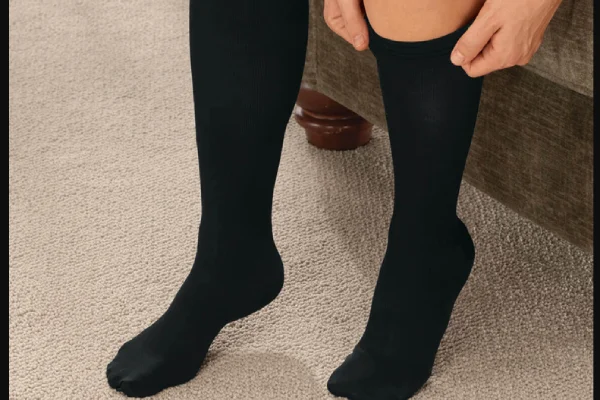
Compression socks are everywhere these days—on athletes, nurses, travelers, and even people scrolling fitness forums looking for the next shortcut to slimming down. Some claims go as far as suggesting that compression socks can actually help you lose weight. But is there any truth to this? Or is it just another marketing myth?
Let’s break down what compression socks really do, where the idea of weight loss comes from, and whether these snug-fitting garments belong in your fat-burning toolkit.
What Compression Socks Actually Do
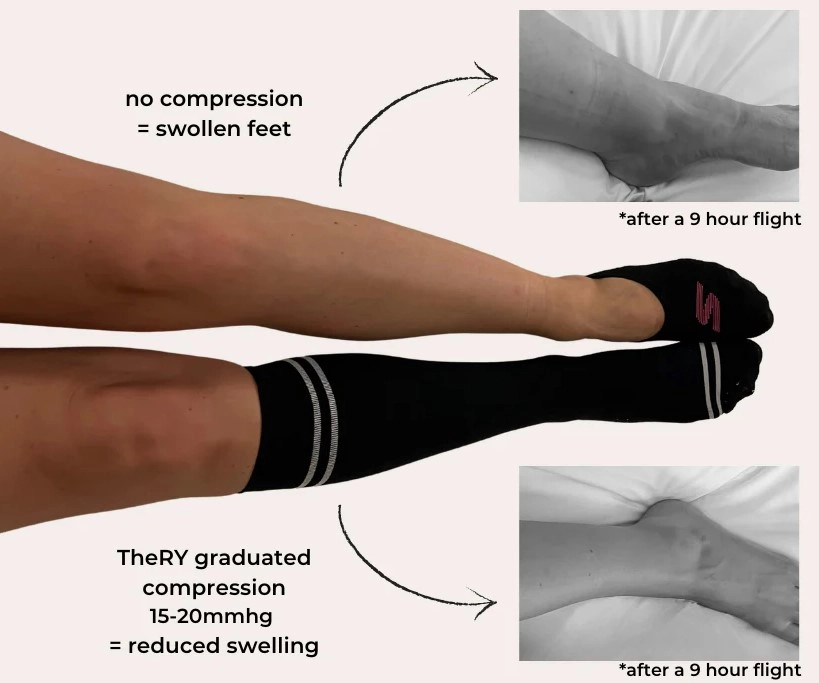
Compression socks aren’t new—they’ve long been used in medicine. By applying gentle, graduated pressure on the legs, they help blood flow back toward the heart. That’s why they’re often prescribed for varicose veins, swelling, or recovery after surgery.
In sports, they’ve found a second life. Runners and athletes wear them to reduce muscle fatigue, improve recovery, and limit swelling during or after tough workouts. Office workers and travelers also use them to fight the dreaded “heavy legs” from sitting or standing too long.
For a deeper dive into how compression socks work and the different types available, check out our complete guide to compression socks.
The Weight Loss Claim Explained
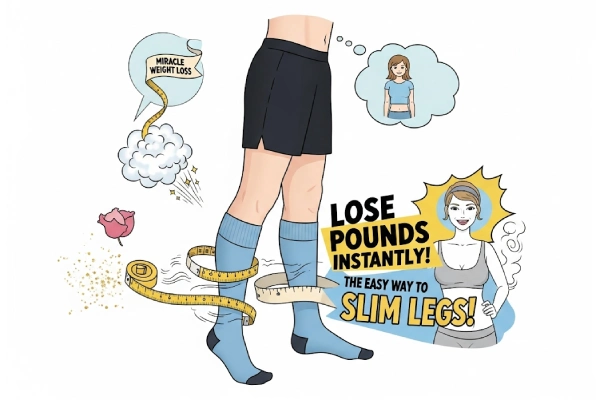
So, why do people think compression socks might be slimming tools? It’s a cocktail of myths, marketing, and a dash of wishful thinking.
1. The sweating myth. Many assume that because compression socks feel snug and warm, they must be “melting fat.” But sweating is simply your body’s cooling mechanism. It leads to temporary water loss, not fat loss. As the American Council on Exercise reminds us, “You can’t sweat out fat; fat loss only happens when you burn more calories than you consume.”
2. Marketing hype. The fitness industry has a long history of promising shortcuts—waist trainers, body wraps, “fat-burning” belts. Compression socks sometimes get swept up in that same narrative, though no credible evidence supports the claim.
3. Circulation confusion. Improved blood flow sounds like it should rev metabolism, but circulation and calorie burn aren’t the same. Enhanced circulation helps muscles recover—not torch calories.
Bottom line: compression socks don’t magically incinerate fat cells. They’re useful, but not metabolic miracle workers.
What Science Really Says
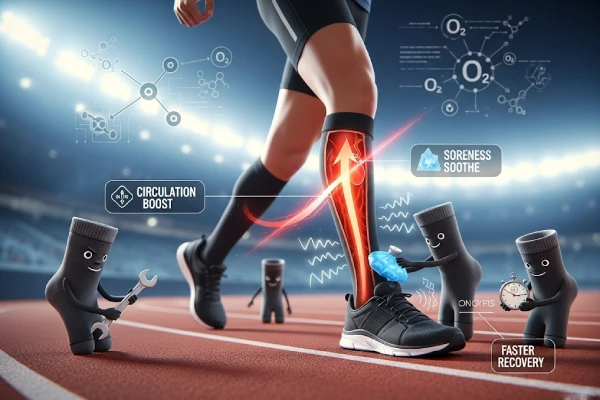
Here’s where research is refreshingly clear. Compression socks have proven benefits, but fat loss isn’t one of them. Studies consistently show they can:
- Improve blood circulation and reduce the risk of venous pooling (Lurie et al., Journal of Vascular Surgery, 2018).
- Reduce swelling and discomfort, particularly after long periods of standing or flying.
- Aid post-exercise recovery, with some athletes reporting less soreness and quicker bounce-back (Ali et al., Journal of Strength & Conditioning Research, 2007).
What they don’t do:
- It directly burns fat.
- Increase calorie expenditure.
- Triggers weight loss on their own.
There is, however, an indirect angle worth noting. If wearing compression socks keeps your legs fresher, reduces soreness, and helps you stick to your training schedule, then they may support weight loss indirectly—by making exercise more sustainable. The socks aren’t the fat-burning engine; they’re the pit crew keeping you in the race.
Better Ways to Support Weight Loss
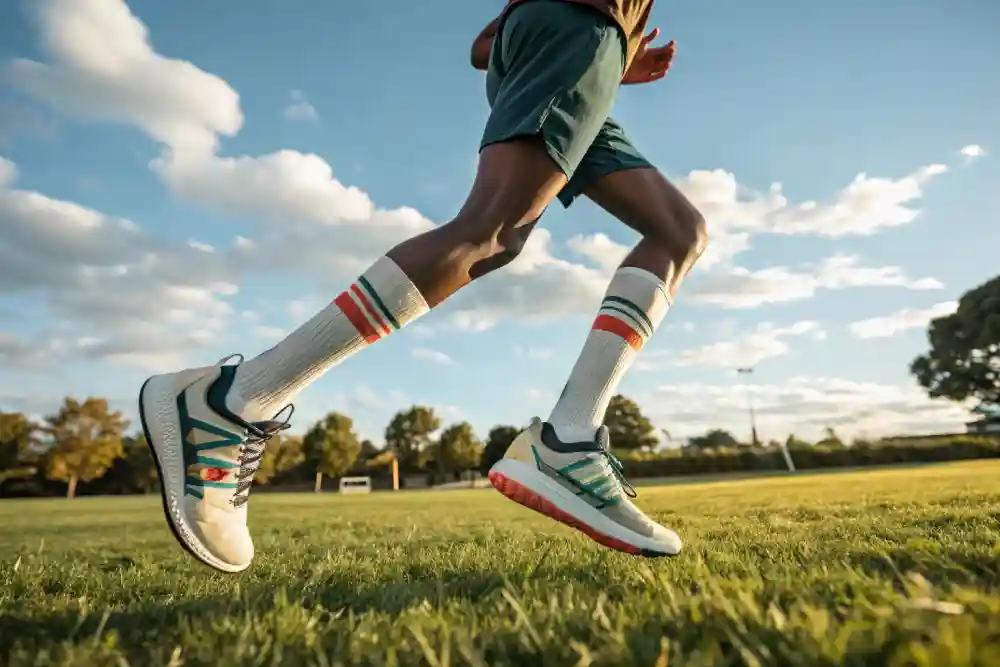
Let’s not overcomplicate things. Sustainable weight loss still boils down to:
- Eating in a slight calorie deficit (consuming fewer calories than you burn).
- Staying consistent with physical activity, especially strength training and aerobic exercise.
- Prioritizing sleep and recovery, since fatigue is the enemy of consistency.
Compression socks may fit into that third category—by reducing discomfort and helping you recover—but they are an accessory, not a solution. Think of them as a supportive tool in your gym bag, not the star player.
Who Should Use Compression Socks (and Why)
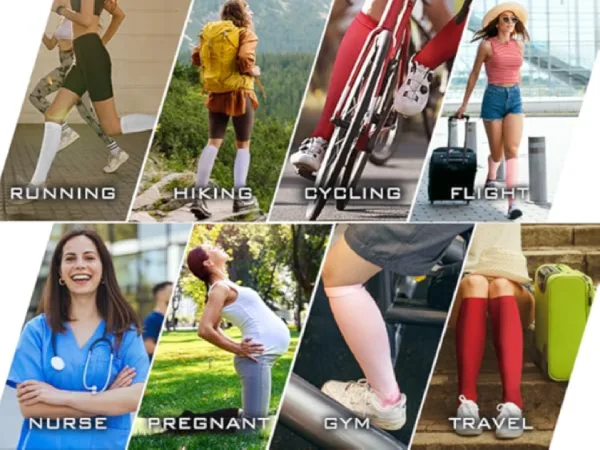
Even if they won’t shave off pounds, compression socks are extremely useful for many people:
- Athletes and runners: For faster recovery and reduced muscle soreness.
- Workers on their feet all day: Nurses, teachers, and retail staff often swear by them to reduce fatigue.
- Travelers and desk workers: Long hours of sitting can increase swelling and clot risk; compression helps keep blood moving.
- Patients with circulation issues: Always under medical supervision, these socks are prescribed for conditions like chronic venous insufficiency or after surgery.
- Nurses, teachers, and anyone on their feet all day often rely on them—see our article on the best compression socks for standing all day.”
- For travelers: If you spend hours flying, you’ll want to read our tips on compression socks for long flights.
Final Verdict
So, can compression socks help with weight loss? Not directly. They won’t melt fat or boost your calorie burn. What they can do is make movement more comfortable, help you recover faster, and support the consistency that weight management requires.
In other words, compression socks are a smart ally, not a secret weapon.
FAQs: People Also Ask
Do compression socks burn fat?
No. Compression socks don’t burn fat—they improve blood circulation and reduce swelling, but calorie burning only happens through diet and exercise.
Do compression socks make your legs slimmer?
They can temporarily reduce swelling and fluid retention, which may make legs look slimmer for a short time, but this is not fat loss.
Are compression socks good for workouts?
Yes, for many athletes, they reduce muscle fatigue and aid recovery. This can improve comfort during training, but they don’t enhance fat burning.
How long should you wear compression socks in a day?
Most people safely wear them for 6–12 hours, especially during activity or travel. For medical use, follow your doctor’s advice.
Can compression socks replace exercise?
Absolutely not. They’re supportive gear, not a substitute for movement. Sustainable weight loss requires physical activity and a healthy diet.
Conclusion
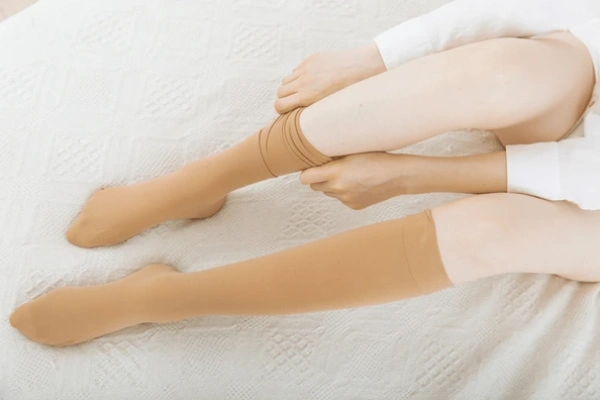
Compression socks are fantastic for circulation, recovery, and comfort. They may even help you keep up your workouts more consistently. But they won’t “burn fat.” For lasting weight loss, stick with the proven trio: smart nutrition, regular movement, and sustainable habits. Use compression socks as a support tool—not a shortcut.
